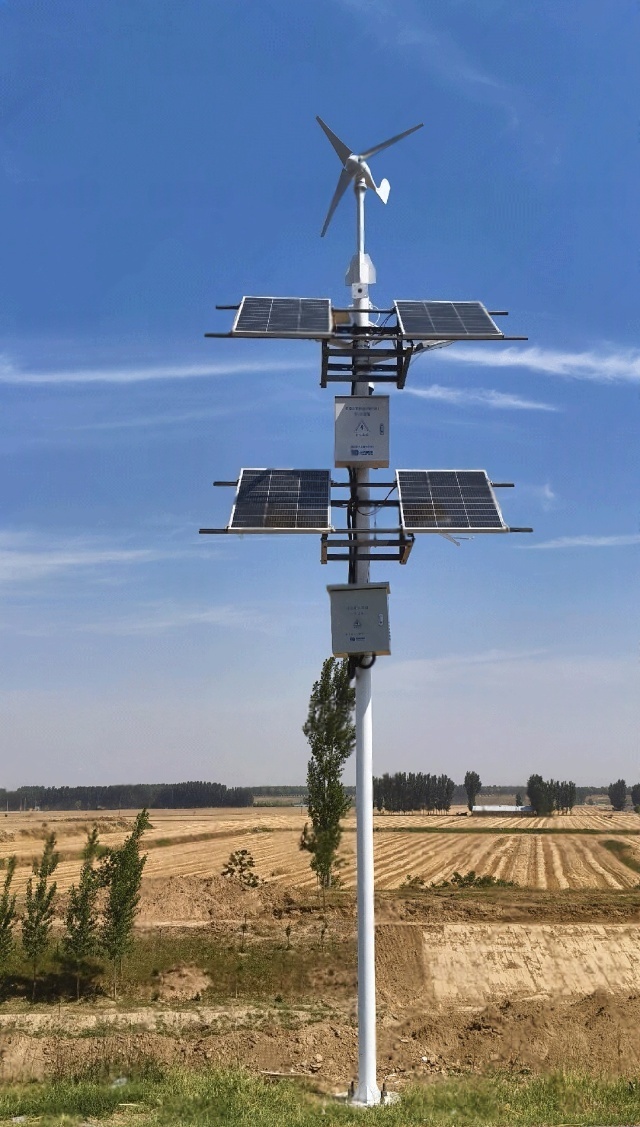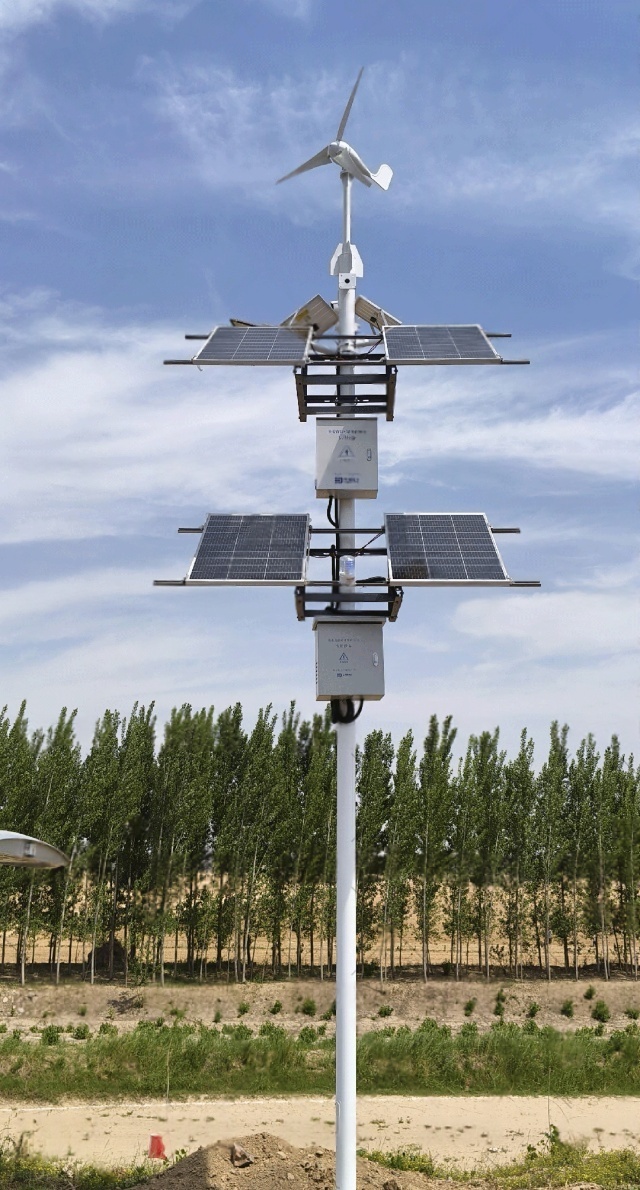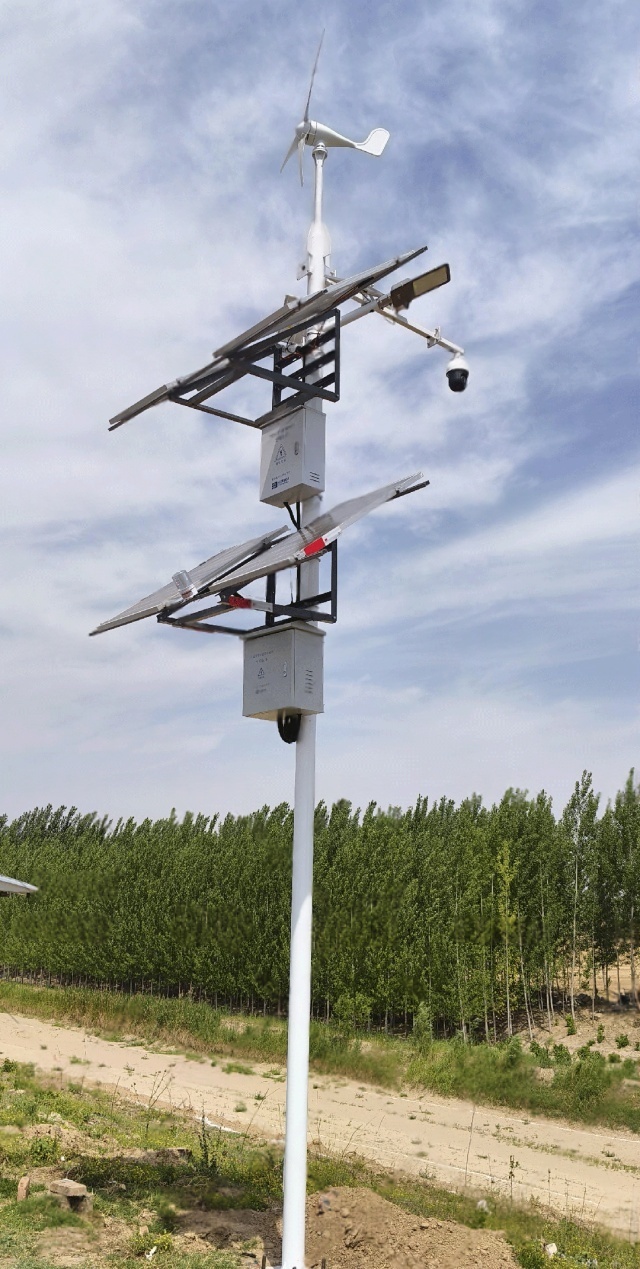This hybrid wind–solar power kit delivers continuous 24/7 river monitoring in Jiaozuo, Henan, enabling anti-mining enforcement, hydrology telemetry, and long-range surveillance along remote riverbanks.
Powered by 1200W PV + 400Ah LiFePO₄ + wind turbine, the system maintains stable output during rainy seasons, winter low-irradiance, and sand-wind exposure—ensuring zero-interruption monitoring for water-resource authorities.
Designed for remote deployment, it reduces O&M trips, improves event response, and provides a scalable off-grid power architecture for river-protection governance.
Below are the 10 most decisive insights about the hybrid wind–solar power kit for river monitoring in Jiaozuo, Henan, distilled into direct decision-friendly takeaways for stronger ranking, faster buyer judgment, and high AEO snippet visibility:
River-bank surveillance in Jiaozuo faces unstable power due to seasonal rainfall, coarse dust from exposed riverbanks, and winter low-irradiance. Traditional wired power routes are costly, interruption-prone, and slow to restore during floods or sand-mining activity.
Key operational painpoints:
✅ Frequent rainy seasons disrupt grid power on river edges
✅ High wind exposure lowers solar efficiency without hybrid support
✅ Patrol-based O&M increases cost and extends fault-response time
✅ River sections distributed & remote → wiring cost exponential
Why renewable hybrid makes sense:
A Hybrid Wind–Solar Power Kit for River Monitoring stabilizes 24/7 monitoring even when sunlight is weak or sandstorms reduce irradiance, allowing sensors + CCTV to continue recording and deterring illegal mining.
The system integrates 1200W photovoltaic array + wind micro-turbine + 400Ah LiFePO₄ battery storage, designed for river surveillance nodes operating day-and-night without grid reliance.
Core structural components:
| Component | Function |
| 1200W PV Array | Harvests long-day sunlight for river-monitoring loads |
| Micro Wind Turbine | Compensates power during overcast + night periods |
| 400Ah LiFePO₄ Bank | Multi-day backup for CCTV + telemetry sensors |
| Remote O&M Controller | Cloud telemetry, low-power scheduling, anomaly push-alert |

The off-grid hydrology power system deployed in Jinzhou delivers measurable and stable performance across real-world groundwater–monitoring conditions.
Key measured results:
✅ Zero-downtime monitoring during rainy season and overcast periods
✅ Multi-day reserve even with low wind + low irradiance
✅ Reduced site patrols by >60%, accelerating emergency response
✅ Full-frame recording of illegal sand-mining events, real evidence retention

The project demonstrates how solar power kit for river monitoring reduces wiring cost, increases uptime, and improves governance efficiency in Henan waterways.
Engineering-grade benefits:
✅ Wind–solar hybrid > single-solar reliability
✅ LiFePO₄ long-cycle chemistry supports year-round missions
✅ Telemetry reduces manual inspection & repair delay
✅ Strong anti-sand & corrosion coating suitable for north-China rivers
✅ Scalable → more cameras, flow meters, or radar sensors can be added

Continuous renewable power supply for expressway checkpoints, bridge-span monitoring, and nighttime camera patrol.
👉 Explore Highway Monitoring Solutions /solutions/highway-surveillance
Off-grid PoE switching for multi-node hydrology probes, CCTV clusters, and distributed river telemetry networks.
👉 View PoE Power Systems /solutions/poe-switch-systems
Solar-wind hybrid supply for oil pipeline leakage detection, valve telemetry, and river-crossing pressure monitoring.
👉 See Pipeline Monitoring Solutions /solutions/pipeline-power-kit
Off-grid energy for orchard cameras, irrigation valve controllers, soil-moisture sensors, and crop-environment telemetry.
👉 Discover Farm Monitoring Kits /solutions/agriculture-monitoring
Fully configurable PV wattage, wind-support option, battery capacity, enclosure size & communication modules for engineering teams.
👉 Request Custom Engineering Design /contact
A hybrid wind–solar power kit rated at 1200W with 400Ah LiFePO₄ storage supplies continuous power to riverbank cameras and telemetry. It enables 24/7 monitoring and supports sand-mining prevention, water-resource governance, and long-range river surveillance without dependency on grid power.
Yes. Wind input compensates for reduced sunlight, while high-capacity battery storage maintains uninterrupted camera and sensor operation through multi-day low-irradiance periods. This ensures stable river monitoring during monsoon rainfall, winter haze, and seasonal weather fluctuations.
The 400Ah LiFePO₄ battery bank supports multi-day autonomous operation, allowing surveillance equipment to continue running during periods of no wind and minimal solar input. This endurance is essential for river safety, especially during flood season or emergency enforcement windows.
Yes. The hybrid system requires no municipal grid connection and installs rapidly using ground or pole-mount brackets. This makes it ideal for isolated riverbanks, long-distance dredging zones, and locations where trenching or cable routing would otherwise be cost-prohibitive.
With remote telemetry, fleet managers can monitor sensor power, camera status, and data health from mobile interfaces. This eliminates frequent on-site patrol cycles and lowers river-inspection labor requirements, improving enforcement efficiency against illegal sand-extraction activities.
Yes. The hybrid wind–solar platform supports dual-load power distribution for video streaming, hydrology sensors, and environmental telemetry. Even during peak energy demand, the system maintains stable output to avoid river-surveillance blind spots or data interruptions.
Solar panels use anti-sand and hydrophobic coatings, while batteries are housed in sealed corrosion-resistant enclosures. This protects the system from dust storms, moist river air, and long-term weather degradation—critical for riverbank installations exposed to wind and particulate flow.
Yes. Video feeds, water-level data, and environmental readings can be transmitted over 4G/LoRa to central control platforms for live analysis. Remote monitoring helps authorities respond quickly to dredging, flooding, or abnormal river-activity trends.
Reinforced frame geometry and aerodynamic turbine housing allow safe operation during high-wind events. Wind energy generation further boosts river monitoring uptime in seasons with strong airflow but insufficient sunlight—especially valuable in open flood-plain environments.
Routine inspection is typically annual, thanks to smart diagnostics that flag voltage anomalies and load irregularities in advance. Remote O&M reduces the need for on-site technicians, extending system lifetime and lowering lifecycle cost for river-management departments.
Yes—PV power, turbine size, LiFePO₄ capacity, sensor communication modules, and mounting systems can be tailored for specific river conditions. This flexibility allows integrators to match system output to CCTV load, telemetry frequency, and enforcement scope.
Ideal users include river-management bureaus, hydrology authorities, EPC contractors, environmental enforcement teams, and integrators deploying long-distance riverbank CCTV. The system offers scalable renewable energy for anti-sand mining control, hydrology sensing, and flood-risk early warning.
Kongfar designs renewable monitoring power systems for environments where illegal sand-mining, river disturbance, and unstable grid access demand long-duration off-grid operation.
Our engineering architecture for this Jiaozuo river-monitoring case demonstrates what makes us different:
Our 1200W hybrid configuration ensures continuous output during rainy summer months + low-wind winter periods, preventing monitoring blind spots common to single-source systems.
Stable power supports night-vision CCTV, long-range transmission, intrusion alarms, enabling real-time evidence capture and rapid enforcement — directly targeting the core challenge of River Sand Theft Supervision.
Industrial-grade LiFePO₄ storage, surge protection, anti-sand module sealing, and hydrology-grade control logic deliver multi-day autonomy + zero-interruption data retention.
📌 No grid, no generator — still 24/7 running.
Remote diagnostics, power-status telemetry, and early-warning alerts reduce patrol frequency across long river sections — cutting O&M cost while increasing regulatory efficiency.
Supports more cameras, radar flow meters, PoE nodes, and AI recognition modules without reconstruction — enabling hydrology bureaus to expand monitoring belt-line coverage year by year.
For distributor cooperation, technical integration, or large-scale deployments, connect with us here:
Website (Official Site)
https://www.kongfar.com
Email (Business Inquiry)
tony@kongfar.com
Company (Manufacturer)
Shenzhen Kongfar Technology Co., Ltd.
Headquarters
Shenzhen, Guangdong, China
Capability Summary
We supply solar power kits for groundwater monitoring, off-grid hydrology stations, solar-powered CCTV systems, wind–solar hybrid energy kits, and OEM/ODM custom off-grid solutions for engineers, integrators, and government hydrology projects.
Shenzhen Kongfar Technology specializes in off-grid solar power kits tailored for hydrology, environmental monitoring, agriculture, mining, and remote engineering scenarios.
Our core technical domains include:
✅ Solar power kits for water-level, hydrology, and groundwater monitoring
✅ Off-grid CCTV solar systems for remote surveillance in harsh environments
✅ Solar-powered PoE switch systems for distributed sensor & telemetry networks
✅ Wind–solar hybrid power kits for low-sunlight northern/western regions
✅ Mobile Surveillance Trailer systems for rapid-deployment flood, riverbank & emergency monitoring
✅ Dust- & sand-resistant solar kits for mining sites and industrial safety
✅ Smart-irrigation and orchard monitoring power systems
✅ Custom OEM/ODM solar power solutions for government projects & integrators
✅ Long-life LiFePO₄ storage systems for 24/7 monitoring tasks
✅ 4G/LoRa telemetry & automated power-status reporting systems
Kongfar continues to deliver reliable off-grid power solutions enabling long-term field monitoring across rivers, reservoirs, wetlands, agricultural zones, groundwater stations, pipelines, and remote engineering sites worldwide.